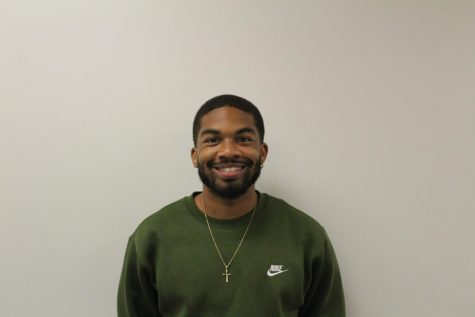The impact of the new NIL rules on collegiate athletics
Oct 4, 2021
On July 1, 2021, the NCAA Division 1 board of directors passed a policy allowing student athletes to be compensated for their name, image and likeness, (NIL). This new rule will now allow student athletes to receive compensation for third-party endorsements related to athletics, giving athletes more power than ever before to run their own camp, build their brand and business.
Upon the NIL policy passing many major student athletes in college sports have signed massive deals reaching in the six-figure range. Student athletes with a large social media presence have cashed in on deals promoting different content from these respective businesses, including some receiving gifts courtesy of the businesses they’re representing. For example, Hanna and Haley Cavinder play basketball at the Fresno State University. These twins, known for their popularity on Tik Tok, immediately cashed in on NIL deals with Boost Mobile after working with a tech company that helped them find endorsements.
For many years, student athletes haven’t got their fair share when it comes to the millions of dollars floating around college sports – everyone received their cut except the athletes. Athletic directors, head coaches and assistants all raked in millions of dollars annually while the student athletes received nothing, while generating millions of dollars of ticket and TV revenue for their schools.
Before the college football season began, Alabama head football coach Nick Saban was on record saying his sophomore quarterback Bryce Young is receiving nearly one million dollars in endorsements. This hasn’t been confirmed but many believe Saban said this as a recruiting tactic. Young’s estimated earnings has given fans the idea of how beneficial the NIL has amongst student-athletes.
Bigger schools have the same advantage they once did before the NIL passing. Many college coaches and representatives are working with local businesses to create deals for their student athletes. American Top team, an MMA training company in Miami, has agreed to pay student athletes on the University of Miami football team several hundred dollars monthly. An estimated 90 football players on scholarship will receive a monthly allowance due to this NIL deal.
Athletes such as Quinn Ewers, who is now a backup quarterback for Ohio State football, left high school early to pursue NIL deals. Ewers was a highly-regarded recruit who skipped his senior season of football to enroll at Ohio State early. Although Ewers is a backup, he has received large NIL deals due to social media presence and clout surrounding his skillset on the football field. Emoni Bates, who at one point was regarded as the “next” Lebron James, enrolled early at the University of Memphis. Bates, only 17 years old, will be represented by Roc Nation, a sports agency founded by rapper Jay Z. The new NIL rules have allowed athletes to be represented while in college to allow their agents to take care of negotiating.
The NCAA finally listened to their student athletes giving them the ability to receive income based on their name while remaining eligible. Many athletes leave college early to pursue a professional career in order to receive money to provide for their family. This new rule will allow those athletes to continue their education while making money. Student athletes amongst the country will now consider staying in school longer to take advantage of the NIL. This has given college coaches another pitch to help lure in star recruits.
This rule change has also led many athletes in college sports to return back to school. Some athletes are generating more money through NIL deals than they may receive through the professional route. University of Iowa point guard Jordan Bohannon returned to college basketball for his sixth season using his COVID-19 year of eligibility. Twenty-four-year-old Bohannon was able to take advantage of NIL deals allowing him to receive income using his name, image, and likeness.
This may be a reoccurring theme as many student athletes will consider staying in school longer while also increasing school graduation rates. For decades athletes have been fighting for publicity rights when it comes to name, image, and likeness. This change will have a positive impact and change college sports forever.








